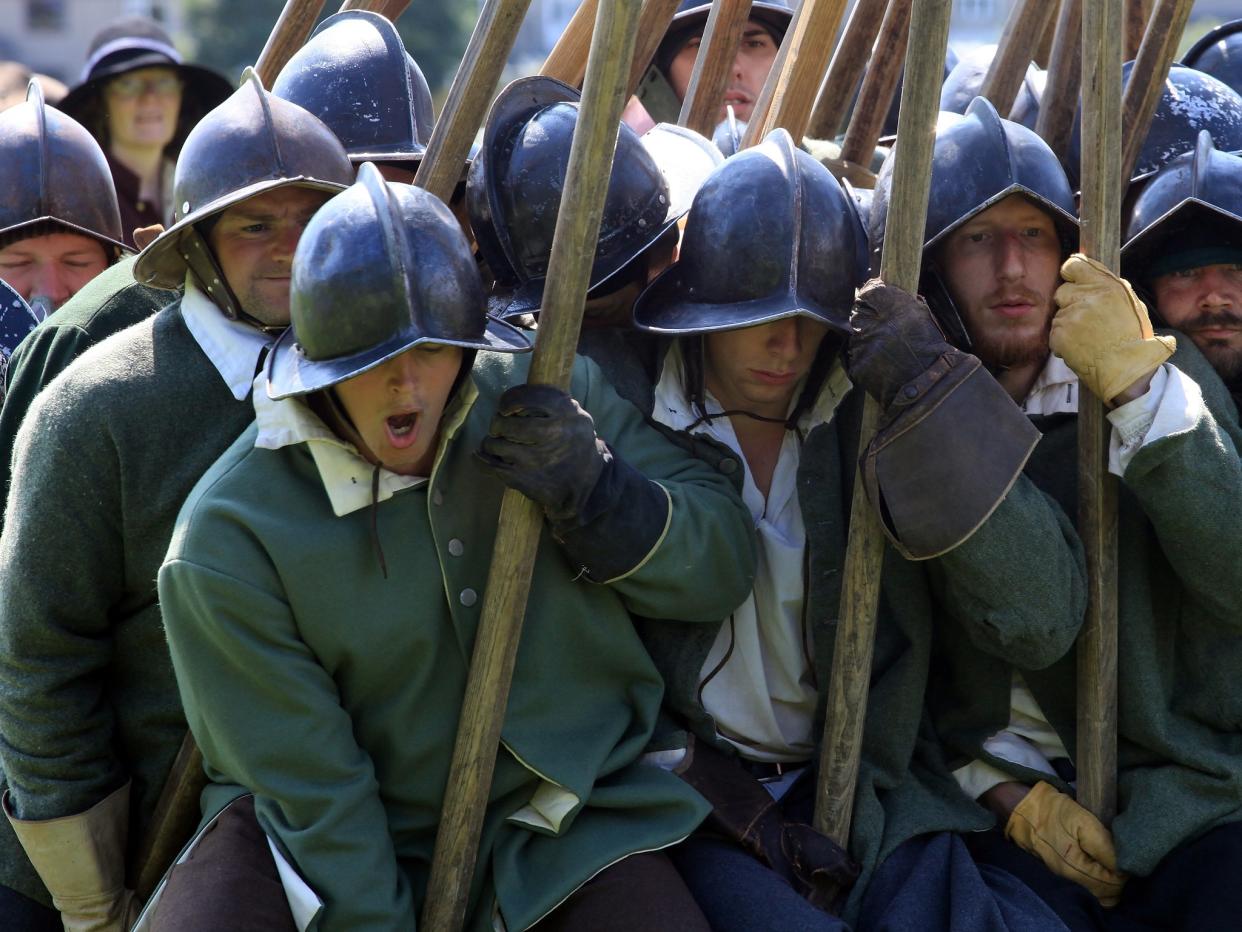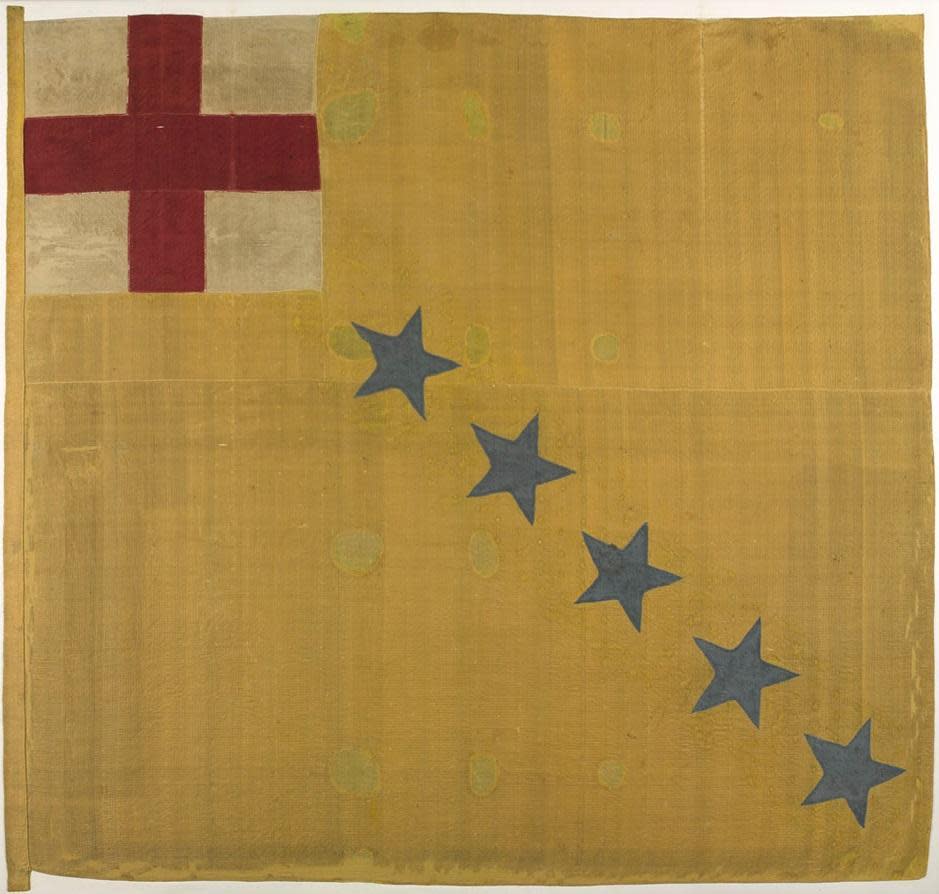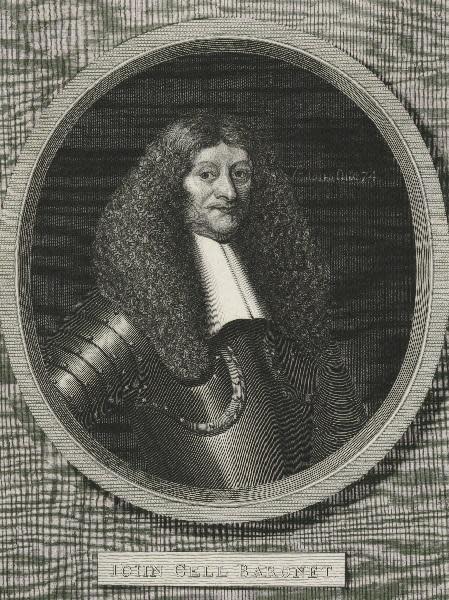Huge Roundhead civil war battle flag will go on display for first time in 350 years

For the first time in 350 years, a symbol of armed resistance to the Crown is to be put on public display in a government funded institution – though more in the cause of historical education than subversion.
The symbol – an ultra-rare 25 square foot Parliamentarian battle flag – will go on public display for the first time since the English Civil War, when the National Army Museum reopens next week after three years of refurbishment work.
Of the hundreds of civil war Parliamentarian flags that were made and carried on campaign, only around half a dozen have survived – mainly in private collections.
But the one going on permanent public display next week has a particularly remarkable history. For most of the past three and a half centuries, it has been kept safe and sound by the family of the man who originally formed and ran the Parliamentarian regiment the flag was used by.

That man was a wealthy 17th century Derbyshire industrialist by the name of Sir John Gell. He was a politically complex figure who was initially a royalist (who enthusiastically helped Charles collect unpopular taxes) – but who (for mainly religious reasons) subsequently fought for Parliament against the King.
In a very real sense, Gell – and therefore the battle flag about to go on public display in the National Army Museum – represents the extraordinary complexity of England’s Civil War.
Gell helped the King to survive economically (and therefore aided him in ruling without Parliament) in the run-up to the war and was rewarded by Charles with a baronetcy (probably also intended as a bribe to keep him on side in the looming conflict). But then Gell switched sides, raised an infantry regiment (and a cavalry one) for Parliament and fought the Royalists in several battles.
But then Parliament failed to promote Presbyterianism and so in around 1648 Gell (a fervent Presbyterian) changed sides again, donated money to the King (and asked his forgiveness for having fought against him) – and was arrested by the Parliamentarian authorities and incarcerated for three years in the Tower of London. When the monarchy was restored in 1660, the new king, Charles II, pardoned Gell and gave him a position at court.

Nevertheless, the complexity of the Civil War and its aftermath is further symbolized by Gell and his descendants’ determination not just to preserve the parliamentarian battle flag (now in the National Army Museum), but also a second battle flag (which appears to have been in the family’s possession up till at least 1900), Sir John’s buff Parliamentarian colonel’s coat (now in the Royal Armouries in Leeds), his two pistols and sword (now in a private collection) and what appears to have been his pistol holsters and cavalry saddle. It’s one of the largest series of civil war Parliamentarian military artefacts associated with a known Parliamentarian military commander and then kept safe by his family across the centuries.
New research demonstrates how the original collection appears to have been kept together as different branches of the Gell extended family inherited them over the years. Certainly from the mid-17th century to the mid-19th-century, the collection was kept in the Gell family ancestral home – 16-18th century Hopton Hall near Wirksworth, Derbyshire. Then, in the mid-19th century, it seems to have been transferred to an early Georgian country mansion, Radbourne Hall in Derbyshire, and finally to early 19th century Newnham Hall near Daventry in Northamptonshire. In 1994, after the death of the last member of the family to own them, the collection was sold at auction with the battle flag being purchased by the National Army Museum. However, only now, following the refurbishment, has the museum had the space needed to put the flag on show.
The museum and the public owes the preservation of this extraordinarily rare and historically important object to the care taken by eleven generations of Sir John Gell’s family to preserve it.
But, its real importance lies in the degree to which it symbolises the complexity of civil conflict itself. For the politically fluid nature of the warfare and suffering England endured in the mid-17th century is still being visited upon other parts of the world to this very day. If nothing else, the flag, the passions and the political complexity it represented all those centuries ago in England might perhaps, in its own very small way, enable us to understand that the comparable complexities of the Syrian, Yemeni, South Sudanese and other current civil wars are not horrors that have only happened somewhere else in the world – but did indeed also happen here in our own green and pleasant land.
The flag forms part of the National Army Museum’s substantial collection of Civil War weapons, armour, clothing and documents.
Among the other Civil War treasures going on public display at the museum from next Thursday (30 March) are the cavalry armour and the military coat of one of Sir John Gell’s most senior officers, Major Thomas Sanders.
Other key Civil War items on display will include a parliamentarian sword (with an insulting image of Charles I on it), a state-of-the-art high-accuracy pistol (said to have belonged to Charles’ most senior general, his nephew, Prince Rupert) and an iron cannonball, retrieved by a local Northamptonshire farmer immediately after the Civil War’s most decisive battle, Naseby, and kept as an heirloom by his descendants until the mid-20th century.
The museum is also putting on display the original document, dated August, 1642, which, in a sense, officially started the Civil War. It was a warrant, issued by Charles I, authorising the raising of a royalist military force, an act which violated English law, as legislation passed the previous year had given Parliament, not the king, the exclusive right to raise troops.
The National Army Museum – located in Chelsea, London – has been closed for the past three years for a major refurbishment. With more space and totally redesigned galleries, the museum is putting 2500 17th to 20th century historic objects on display, a third of which have never been seen by the public before.

 Yahoo News
Yahoo News 
